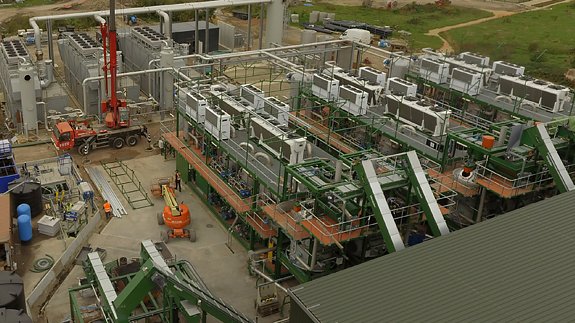Refgas’ CHP plant in Royal Wootton Bassett (pictured) uses low grade wood from construction and demolition waste to generate both heat and electricity.
The surprising thing is the plant’s modest footprint, compared to its generating capacity.
The whole development, including feedstock storage, gasification, engines/generator sets, biochar management, water treatment and control centre is neatly laid out on a site of only 1.25 acres.
When you consider that this system can generate 6MWe, enough to service 12,000 houses, and additionally recover 8.4MWth by way of 90o C hot water or steam (around 6tph), this represents a fraction of the area typically required for alternative steam cycle technology.
The difference is the clever containerisation of key components and the fact that this system uses no high pressure boilers, no steam turbine, no massive cooling towers and produces no difficult emissions.
In fact, the system manufactures its own synthesis gas (syngas) which is accredited as being cleaner than natural gas. This is used to fuel the large, Jenbacher engines which generate the heat and power.
“Why such a tall chimney stack”, I hear you say.
Well, the original planning consent for this site was based upon a plant with a traditional EfW design, featuring a very large building and dispersion of emissions at a high level, in order to meet the legislation pertaining to the combustion of waste.
The developers, upon changing to the Refgas technology, did not have the time to wait for a new planning application and so were stuck with the original chimney height – it really only needs to be around half of that height.
For those companies with a high energy demand, concerned about future energy prices and reliability of supply… it may be time to take a good look at the alternatives.
The Refgas modular construction starts with plant capable of generating 1MWe on a 24/7 basis, and, at the top end, designs for 12MWe and above look very attractive, too.
Couple this with oodles of recovered heat for process use, steam production or chilling/refrigeration and on-site generating capability is now more than a dream for industries which consume large amounts of heat and power but at the same time have limited space available.
This is a promoted article.





